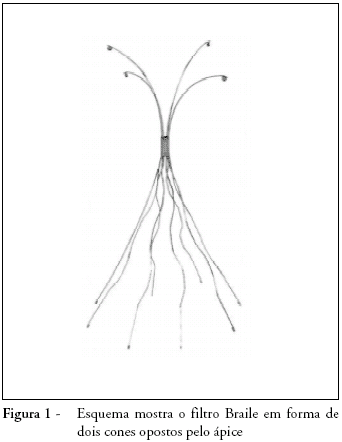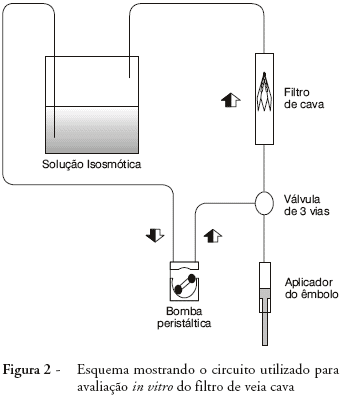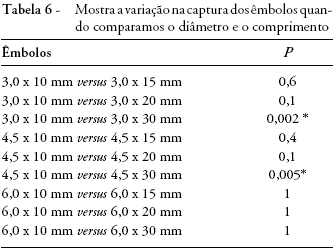OBJECTIVE: The objective of the current study was to evaluate the efficacy of a new low-profile vena cava filter in the retention of emboli in an in vitro model. METHOD: The filter consists of two cones connected at the apexes. The distal cone is comprised of eight stainless steel arms with a purpose of retaining emboli and the proximal cone, made of four arms, acts as an anchor to centralize the filter. Filters were installed and fixed inside three systems using transparent PVC tubes of different sizes (internal diameters of 25, 30 and 35 mm) that were held in a vertical position and connected to a pulsating flow system (peristaltic pump). A reservoir of 0.9% saline solution with 40% glycerin at room temperature was used as the vehicle. Thrombi were made from bovine blood in 3-mm, 4-mm, 5-mm and 6-mm plastic tubes and later the thrombi were sectioned into 10-mm, 15-mm, 20-mm and 30-mm lengths. Each of the 12 sizes of thrombi was assessed 100 times in each of the three systems, with a total of 3,600 events. Five emboli were sequentially released, 10 for each size of embolus and tube, with a total of 360 events. An evaluation of the capacity of the three systems - 100 events each, total of 300 events - to dynamically retain the emboli was made. MRESULTS: The diameter and length of the emboli, as well as tubes greater than 35 mm in diameter can negatively affect the efficacy of the filter. The average of emboli capture for the filters was 80.5% in 35-mm tubes, 88.7% for 30-mm tubes and 86.6% for 25-mm tubes. CONCLUSION: We conclude that the efficacy of this filter is influenced by the size of the emboli and the diameter of the PVC tubes.
in vitro; vena cava filters; vena cava








